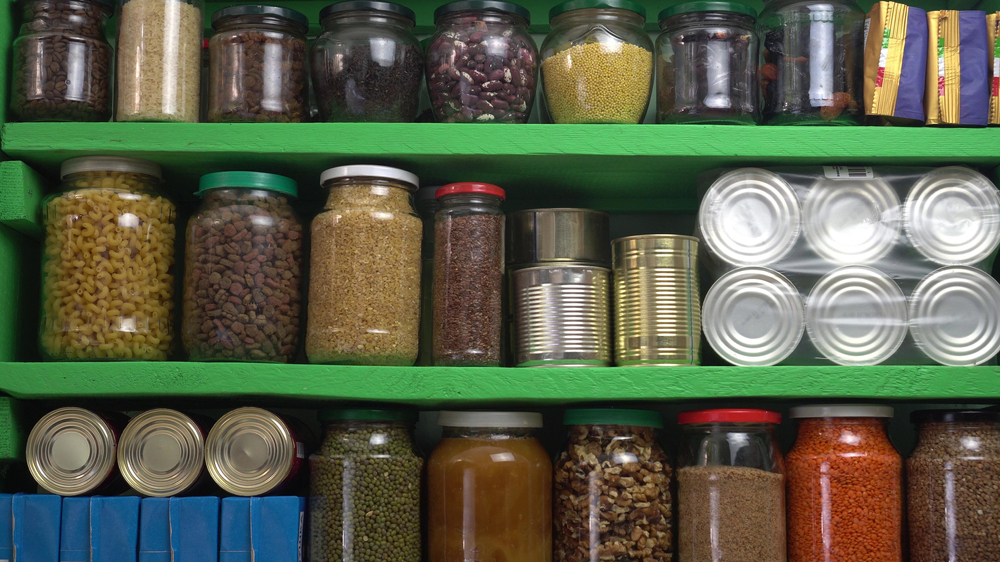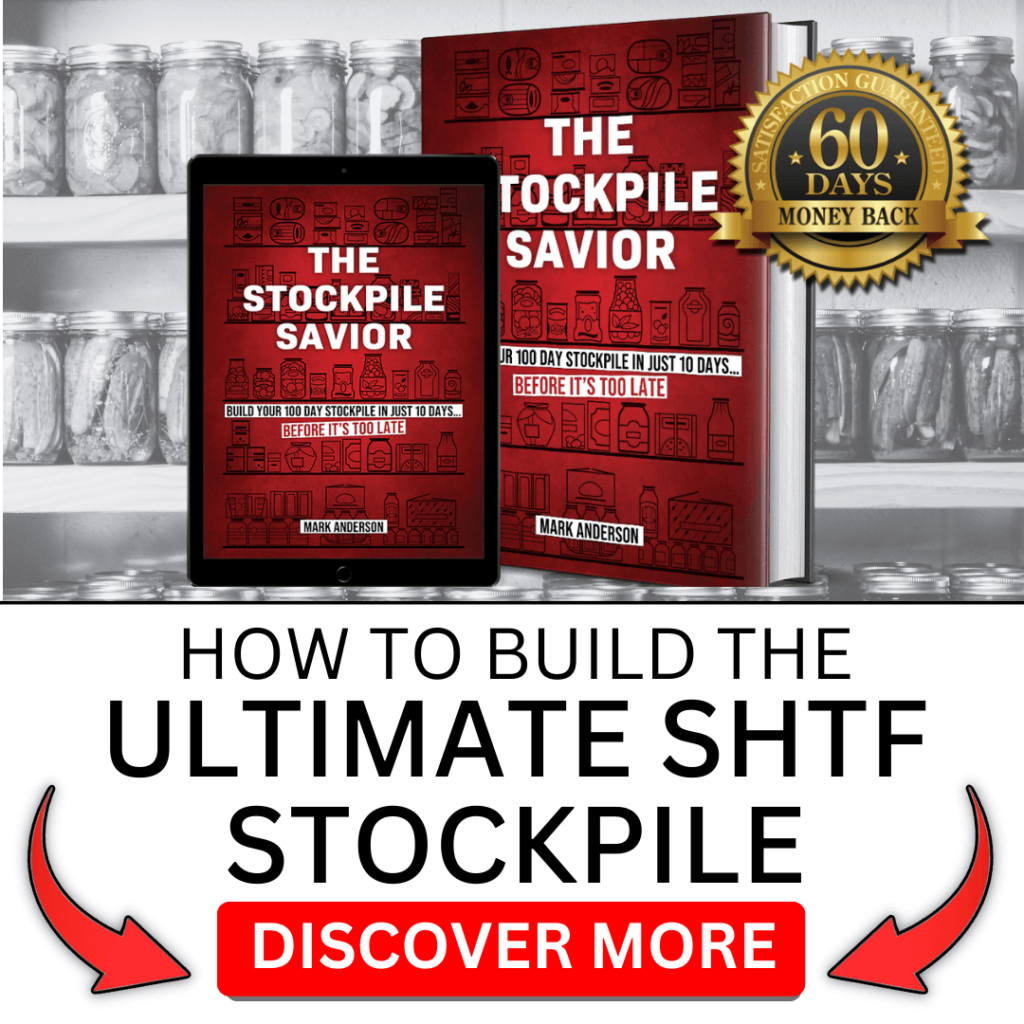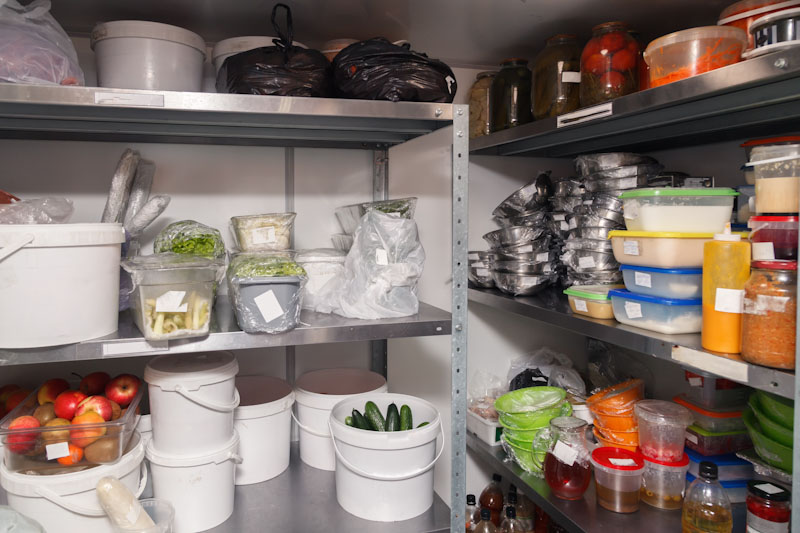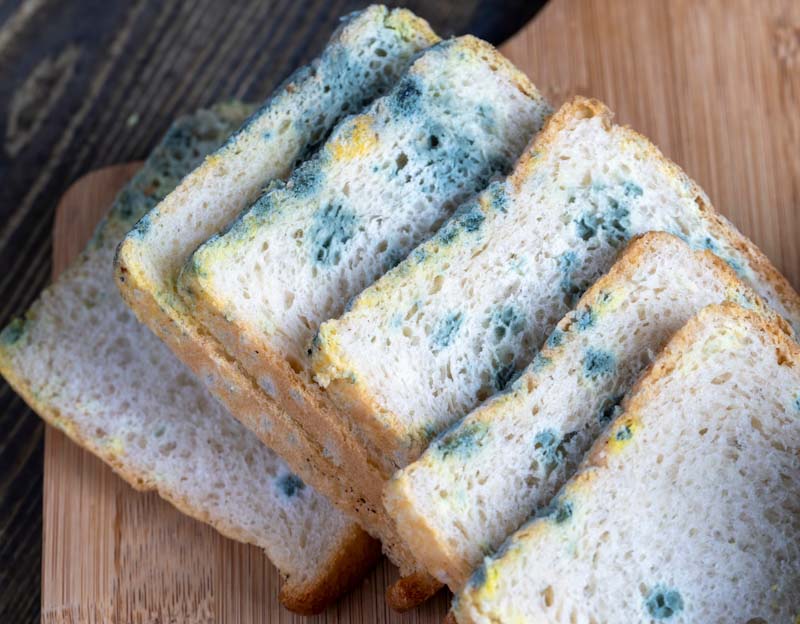Whether you’re turning your home into a survival shelter, stocking an underground bunker, or building a bug-out cabin in the woods, there are a few things you’ll always need. First, of course, you won’t make it without the basics, including food, water, medicine, and weaponry.
There’s a lot to consider when it comes to food. What edible items should you keep in your survival shelter? How should you store them to maximize shelf life?
What to Consider When Choosing Foods
There are a lot of different food options at the grocery store. Some are perishable, while others have a longer shelf life. Some offer the nutrients you need, while others are loaded with empty calories.
There are nearly as many criteria as there are types of food, but when it comes down to stocking your survival shelter, you only really need to consider four things: calories, cost, nutritional value, and shelf life.
- Calories – The average adult needs around 2,000 calories a day to stay healthy. That number varies from person to person and will fluctuate depending on how active you are, but it’s a good baseline. Therefore, you’ll want to stock up on foods for your survival shelter that is calorie-dense. There are two reasons behind this. First, it ensures you have enough calories to get through the day. Second, the more calorie-dense foods you choose, the less space you’ll waste on stuff that won’t help support your dietary needs.
- Cost – This can be problematic, especially if you’re like many preppers stocking their shelter on a budget. Buying in bulk is usually the most cost-effective way to fill your survival shelter with food, but it’s not always an option. Keep the costs in mind when researching food options.
- Nutrition – Calories aren’t the only thing you need in your diet to stay healthy. You also require a variety of foods that provide all the vitamins and minerals you need to survive. For example, you can theoretically survive on beans and rice, but a few months of that will leave you bored to tears and nutritionally deficient.
- Shelf Life – Finally, and perhaps most important, is the shelf life of the food you’re choosing. Stocking up on things that will spoil in two or three months doesn’t do you any good if you end up having to survive on your supplies alone for extended periods. Learn the shelf life of everything you’re planning to store — including how long it can last beyond its supposed expiration date.
What to Stock up On
Now that you know what to consider when stocking your survival pantry, here are some specific items that will keep you healthy for the long haul.
- Fruits – Have you ever heard of scurvy? It’s a disease caused by nutritional deficiencies, specifically a lack of vitamin C. It’s a condition that affected sailors who spent months at sea with nothing to eat but hardtack and salted meat to carry them through their long journey. Fresh fruit is best, but if you don’t have your orchard or citrus grove, canned and dried fruit is a suitable substitute. Canned fruit doesn’t have the longest shelf life, but if you’re continually rotating your stock, you should have plenty of canned fruit to keep you scurvy-free for a while. Dried, and especially freeze-dried, fruits will last much longer if you can keep them from being exposed to moisture. Sealed containers stocked with silica gel packets or other desiccants will keep your dried and freeze-dried fruit shelf stable for years to come.
- Vegetables – Fruits and vegetables might get lumped together on the food pyramid, but they’re both a vital part of a healthy diet. Canned veggies are your best option since most of the ones you’ll want to include in your diet don’t dry or freeze dry well. Although it’s possible, you’ll need water to reconstitute them unless you’re planning to eat them dry as a snack. Like fruit, canned vegetables have a limited shelf life. You’ll want to rotate your stock regularly, use what you have, and replace it with new canned goods you bring in. If possible, maintain a garden to supplement your fruit and vegetable supplies. Fresh is always the best option if it’s available, and many of the fruits and veggies we eat every day are easy to grow in pots and planters. You can even cultivate some items indoors if you have grow lights available. Plus, if you end up with excess, you can always can it and enjoy it later.
- Meats and Other Proteins – Beans may provide plenty of protein, but man (or woman) wasn’t designed to live on beans alone. Meat is usually thought of as a perishable food supply, and while that is true when it’s fresh, there are plenty of ways to make it last longer in a survival situation. Canned meat is your first option, and there are plenty of varieties available on the market today. Things like Spam or chipped beef might not seem appetizing on the shelf, but they still add protein to your diet. Canned fish should also be on your list when you’re planning your survival shelter’s menu. In addition to providing protein, fish like salmon and tuna — even canned — are packed full of micronutrients and things like omega-3 fatty acids that are essential parts of a healthy diet. Make sure you choose canned fish in oil rather than water. It might alter the taste a little bit, but it will stay fresher longer.
- Beans, Legumes, and Nuts – Beans have long been the staple of survival food plans. They come canned or dried and provide a fair amount of protein, as well as other nutrients. They can be turned into just about anything you can imagine, including veggie burgers. You can find a variety of types and should stock up depending on your tastes. Dried beans have a longer shelf life than canned, but they require quite a bit more work before they’re ready to eat. Dried or canned legumes, such as peas, can help add a bit of variety to your diet. Also, make sure you’re adding nuts and nut butter to your stock. Both are chock full of protein and can serve as a snack, meal, or side, depending on how you prepare them.
- Rice and Grains – Rice is usually the second thing you hear mentioned when stocking a survival shelter. Dried rice has a very long shelf life as long as you can keep pests out of it. There’s a reason that it’s been one of the primary dietary staples for countries worldwide for centuries. This isn’t the only grain or grain-adjacent foodstuff you should include in your pantry. Stock up on wheat, corn, quinoa, spelt, and other similar grains. Each has its nutritional benefits and a variety of applications. For example, wheat and corn can be broken down into flour for making bread or pasta. Quinoa pairs well with nearly any other food — either sweet or savory — and provides a lot of nutritional value.
- Condiments – Even if the world ends, you shouldn’t have to eat bland food. Most of the condiments we use every day have a reasonably long shelf life. Most of them — even finicky things like mayonnaise — are shelf-stable until they’re opened. If you don’t want to go overboard and fill up your storage space with bottles of ketchup and jars of mayonnaise, you might want to learn to make it yourself. Mayo is just emulsification of eggs and oil — and homemade always tastes better than store-bought. Take the time to know which condiments are shelf-stable and what’s easy to make from scratch.
- Oils and Fats – Cooking is challenging without something to conduct the heat. Water is your primary ingredient, but for things like frying, you’re going to need some oil or fat. Most unopened cooking oils will last on your shelf for a year to 18 months before they start to go rancid. Buying large jars of cooking oil isn’t a sustainable option for a survival shelter. Instead, focus on other sources of fat for your cooking. For example, lard is shelf-stable fat that you can use for cooking and baking. It isn’t the healthiest option, but if the world ends, the last thing you’re going to worry about is your cholesterol levels. If you hunt to supplement your supplies with fresh meat, you should also render the animal fat into tallow. It doesn’t work as well for things like buttering toast, but it is an excellent alternative for cooking and deep frying in a pinch. If you render it correctly, removing as much water as possible, the tallow can become shelf-stable.
- Spices – Just like the condiments, spices can help you add a bit more flavor to your survival menu. Without spices and salt, you end up with a bunch of bland food — enough to keep you alive and moving, but not enjoyable. Add the spices you use and anything you might miss if you can’t find them after the world ends. Include salt, pepper, garlic, and onion powder, and any herbs or peppers you want to use to bolster taste. As a bonus, if you stock up on spices and don’t end up using everything you stored, you’ve given yourself a collection of items that you can trade to other survivors for supplies you might be lacking. Salt was used as a currency in ancient Rome, and there’s no reason why we couldn’t revive that practice if the economy collapses.
Rotate Your Stock Frequently
Take the time to create the ideal food pantry for your survival shelter. One can at a time. Keep your selections varied enough that you won’t get bored. Being prepared and having a variety of items will ensure you remain healthy and well-fed during isolation.











Beverly Thomas | July 15, 2021
|
I have experimented and found that olive oil in GLASS containers stays good for years after the expiration date. Do not use in plastic containers for olive oil because it becomes rancid very quickly.
Kate Bloodworth | April 12, 2023
|
Yes have kept mine in cool dark cabinet and lasts over 3 years. I think the trick is to buy lard but also quart sized bottles of oil that will not go bad. Also some pans like iron don’t need much oil. I also bought dried butter for taste.
radarphos | December 14, 2021
|
I have read on medical health web sites (that cite research and link it so I can read the research studies or abstracts) that keep saying over multiple years that seed oils, such as corn oil, is the single most dangerous food-like source one can eat-ingest. A study was done with a Commercial fried product (french fries) cooked in corn oil about blood pressure rise that began nearly immediately with ingestion. The health reviewer then said that the vessels around the heart begin to close significantly (contract) when they come into contact with the effects in the body to the presence of corn oil that gets into the blood stream. This can become hazardous to anyone with clogged arteries and according to what I have read has led to a number of heart attacks (and it may well be that the problem was “lack of optimal health” in the person in the first case; but there are plenty of us not in good shape and in many different ways). In a SHTF situation where potentially people will exhaust themselves hauling wood, enduring cold, hauling water, etc. eating anything that closes blood vessels is a NO-GO in my opinion. Now having said this, I know full well that plenty of people will disagree with what I am reporting;–AND I would disagree had I not read from a reliable health doctor (because I love those French Fries and have eaten them for years, although it was during my younger and healthier years). It is amazing when one has lived long enough to learn how “food policy” put out to the public has changed over the last decades. It used to be that butter was bad because of the level of cholesterol in it. Later I learned from the same medical health professional that several of our organs are heavily composed of cholesterol and that it is needed in the body, and sits intentionally along major vessels so that when the body needs it some somewhere, that cholesterol is already nearby for making an instant solution-response to a need for cholesterol. Now butter is good, but corn oil (and other seed oils) are bad, What I think is really happening is that with the strength of internet and published research studies more and more health professionals are chiming in with info that used to have to wait to be read in a paper report, which slows down sharing of information to a crawl. Now the situation everyone faces is the “he said, she said” differences of opinion put into writing;, and including fake-news. Any final answer needs to be based on carefully constructed Scientific-Model research, and then peer reviewed by other professionals in different capacities (nutritionists, MDs, vascular MDs, microbiologists, etc.). My opinion. Coconut saturated oil (hard at room temperatures) is considered a good oil; meat/fish-fat oils kept in the refrigerator are good for frying meats.
Tony | April 13, 2022
|
Great OpEd on oils. I only use extra virgin olive oil, been around for a few thousand years, and coconut oil. Nothing else in my house except Crisco paste oil to season my cast iron.
Cheers
Ed | April 8, 2023
|
Avocado oil is also good and good for you
Trudy | January 1, 2023
|
You are correct. Remember when eggs were bad? Butter bad, margarine good, lol. All of it wrong and promoted by big food conglomerates. Same with fats, saturated meat fats, coconut oil, olive oil and avocado oil are good oils. Vegetable oils like corn, canola, safflower cause inflammation in your body. If you do not ingest enough cholesterol your liver will make but it makes bad cholesterol. There is research that shows people on low fat diets will get worse bad cholesterol than when they eat healthy saturated fats.
My sister who is thin refuses to hear that her low fat and no saturated fat diet is what is causing her terrible cholesterol numbers. I eat all of those fats in fairly high amounts on my low carb diet and my cholesterol is great. Our bodies were designed to metabolize meat fat not artificially manufactured vegetable oils.
Kate Bloodworth | April 12, 2023
|
Question- Had stopped using corn oils already but do didn’t know about canola. Thanks. Do you know if vegetable oil is safe? Thank you.
Douglas Collins | December 14, 2021
|
About scurvy- The traditional preventive was citrus fruits- ie the British ‘Limeys”. What is little known is that the Hanseatic League merchant ships solved this problem even earlier with -saurkraut. It would be a great storage food where weight isn’t a factor. It keeps well and even improves a little with time. It is also easy to make and provides some great probiotics that would help to avoid gastric prpblems in a survival situation.
CRW | April 11, 2022
|
Canned chunky soups are my choice, easy to have variety, last well beyond the stated X-dates easy to open with a can opener, spoon & flexible spatula, rinse when empty & drink that. Stack compactly & durably.
cheri | April 9, 2023
|
as for onion powder onions are pretty easy to grow as is garlic. slice and dehydrate then run through a blender till the desired granulation or run through a hand grinder and then spread very thin ahd dehydrate and you will have minced onion or garlic. tastes better than store bought.
J,F, Black | April 11, 2023
|
Purportedly, margarine is one molecule away from plasti and developed during/after WW2 to fatten up chickens. Apparently they discovered that it caused the chickens to get sick and die. Somehow margarine ultimately became a product to replace butter..
I never bought into the radical ‘post war ‘Medical Science. Further, I am a firm believer in do not eat anything “man” fabricates or fools around with. Currently I am age 84 and my husband is 95. Our 60 yr old son was was raised on certified raw in So California from the home delivery Alta Dena Dairy. until Dairy Company Lobbyists managed to get them shut down in the 1980’s. Our son never missed a day at school due to illness and remains healthy. We have eaten a normal diet of meat and vegetables..
In these troubling times, common sense will most likely be an attribute.
Kate Bloodworth | April 12, 2023
|
I generally lean towards dried foods since canned foods have an expiration date that is sometimes shorter than one would think. Especially non brand canned foods have a tendency to explode even if kept in cool dry place. Vegetarians though I am not one, subsist very well without meat. What I have done is lay in a good supply of vitamin supplements with more than year expiration date to help. Also in regards to condiments I bought small packets single serve of a few plus non Mayo salad dressing.